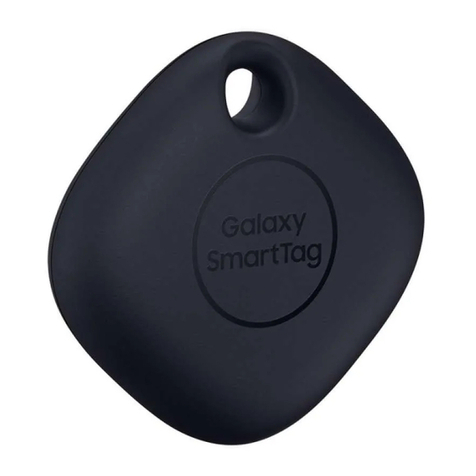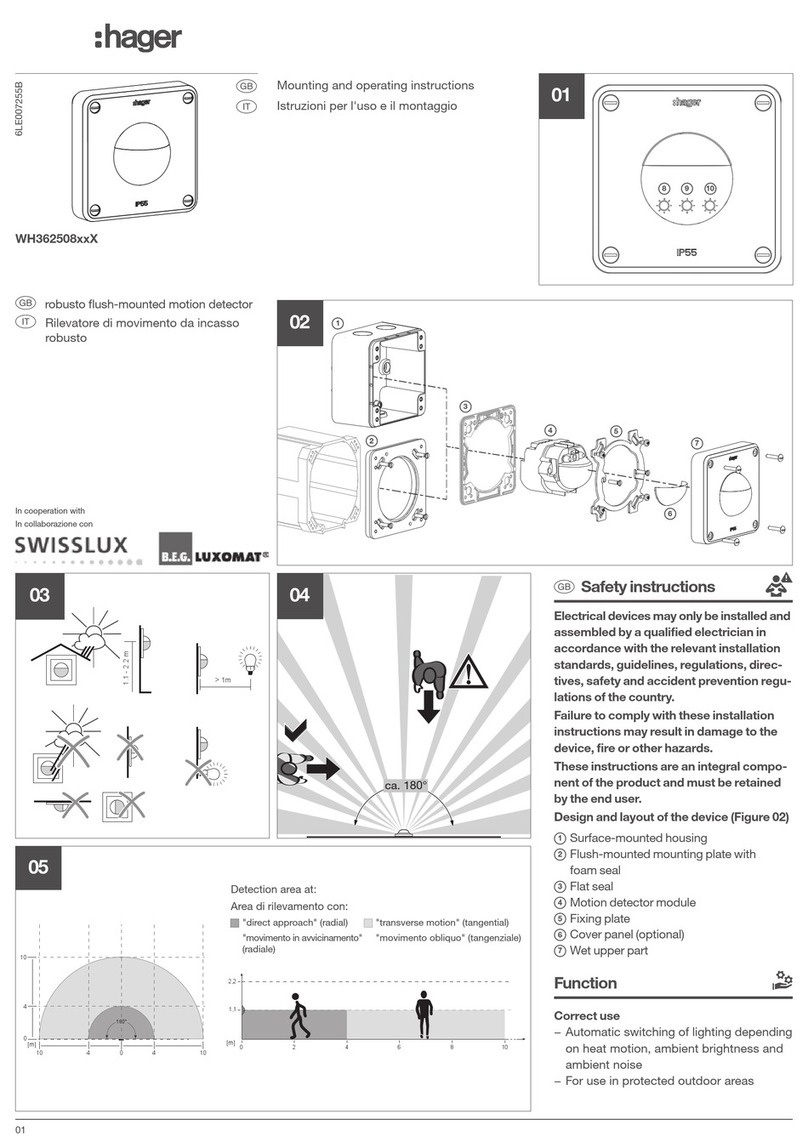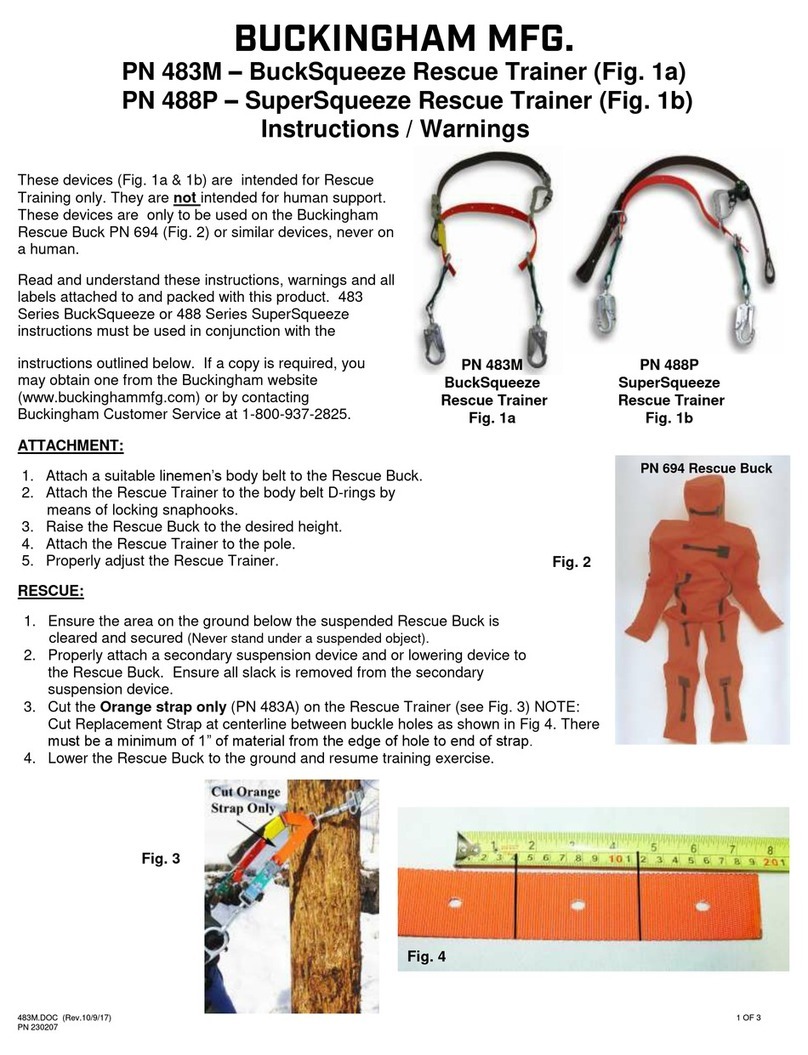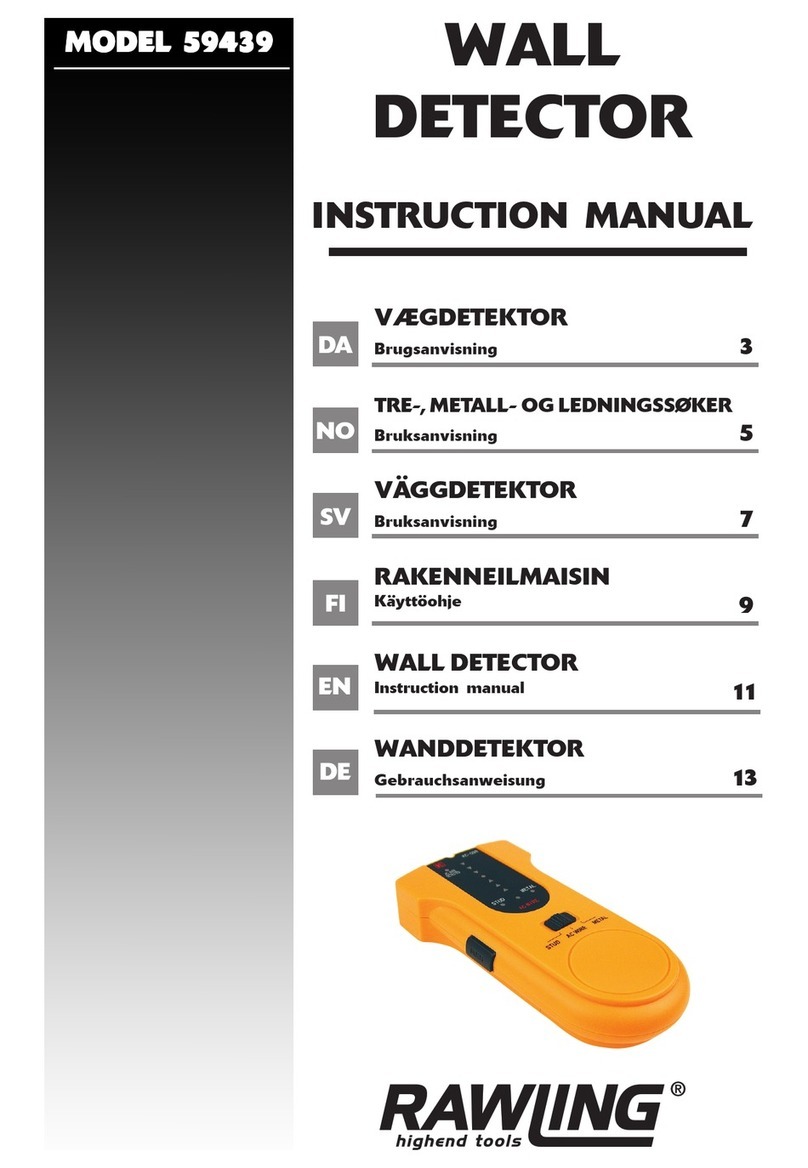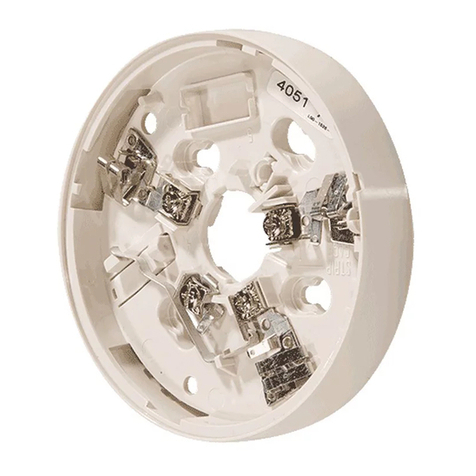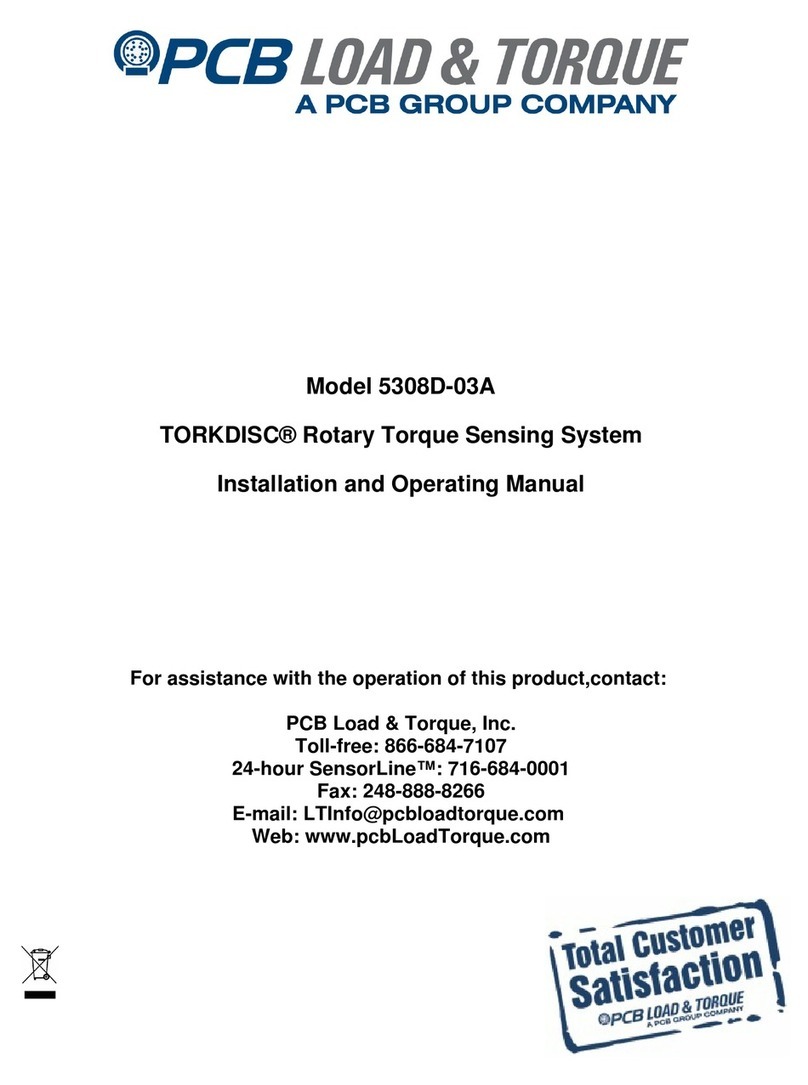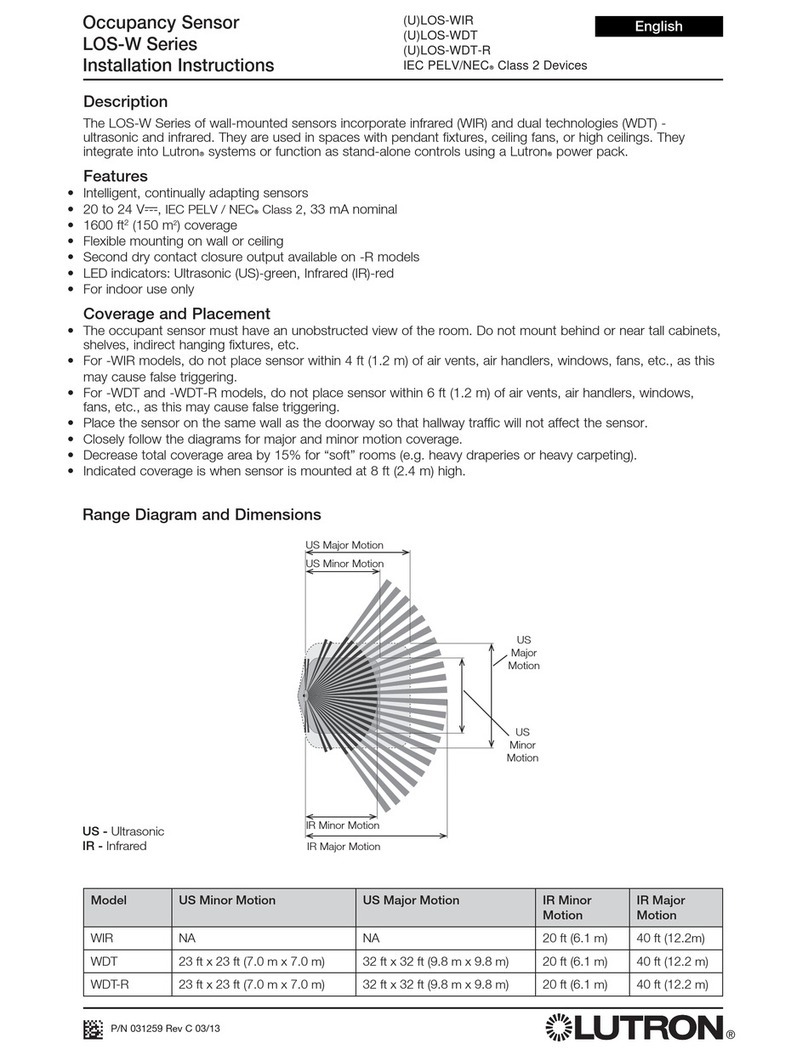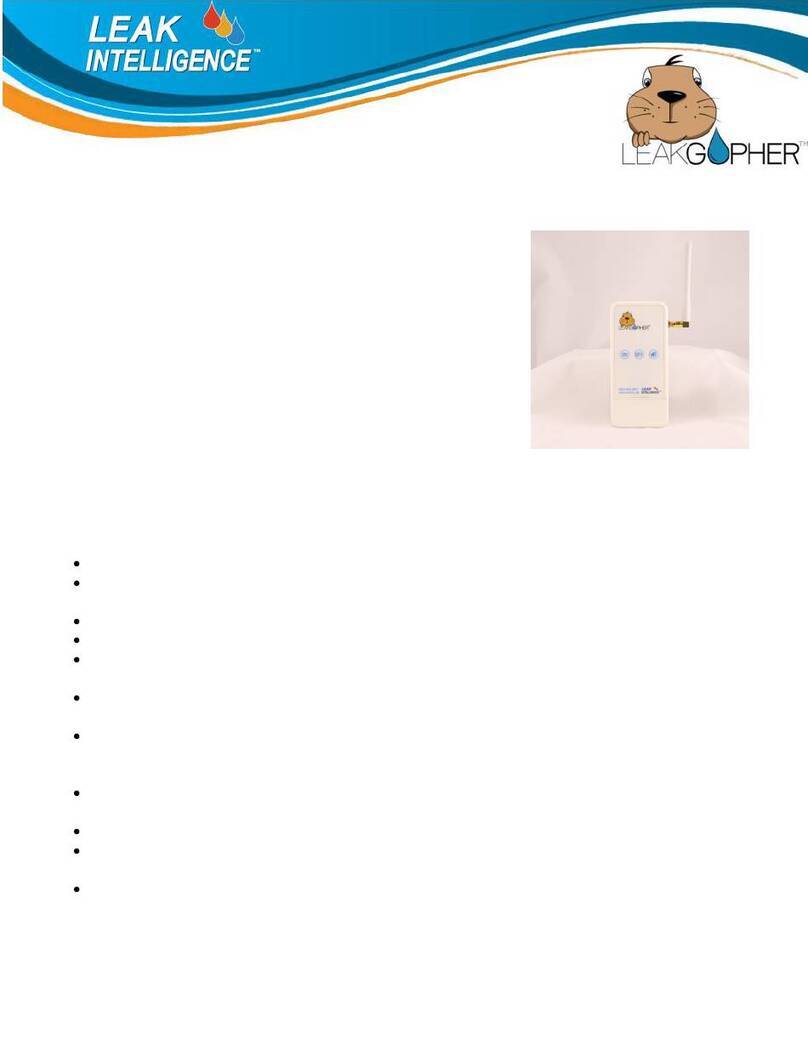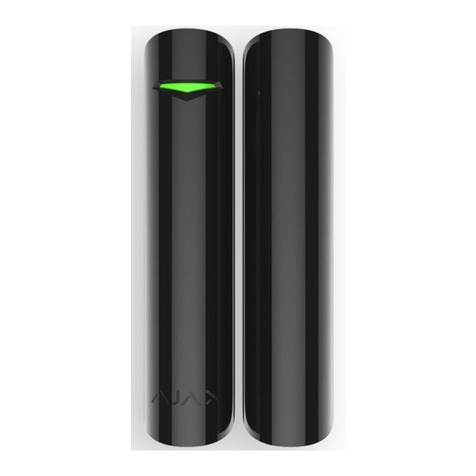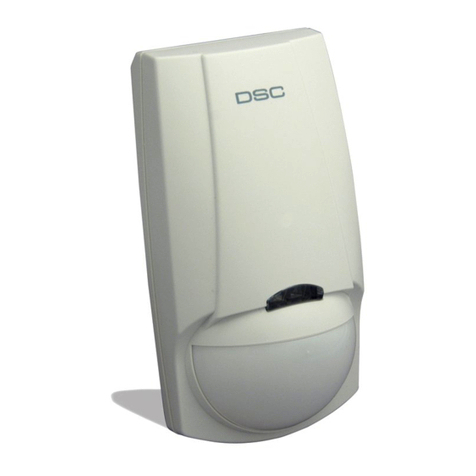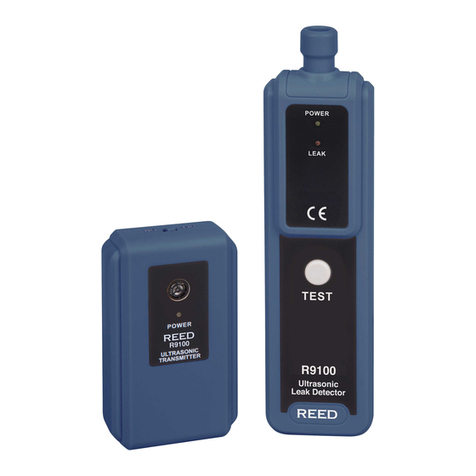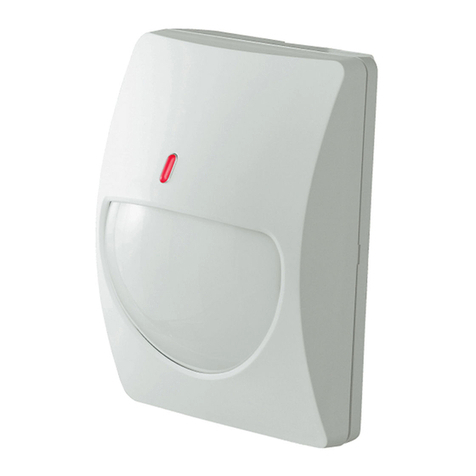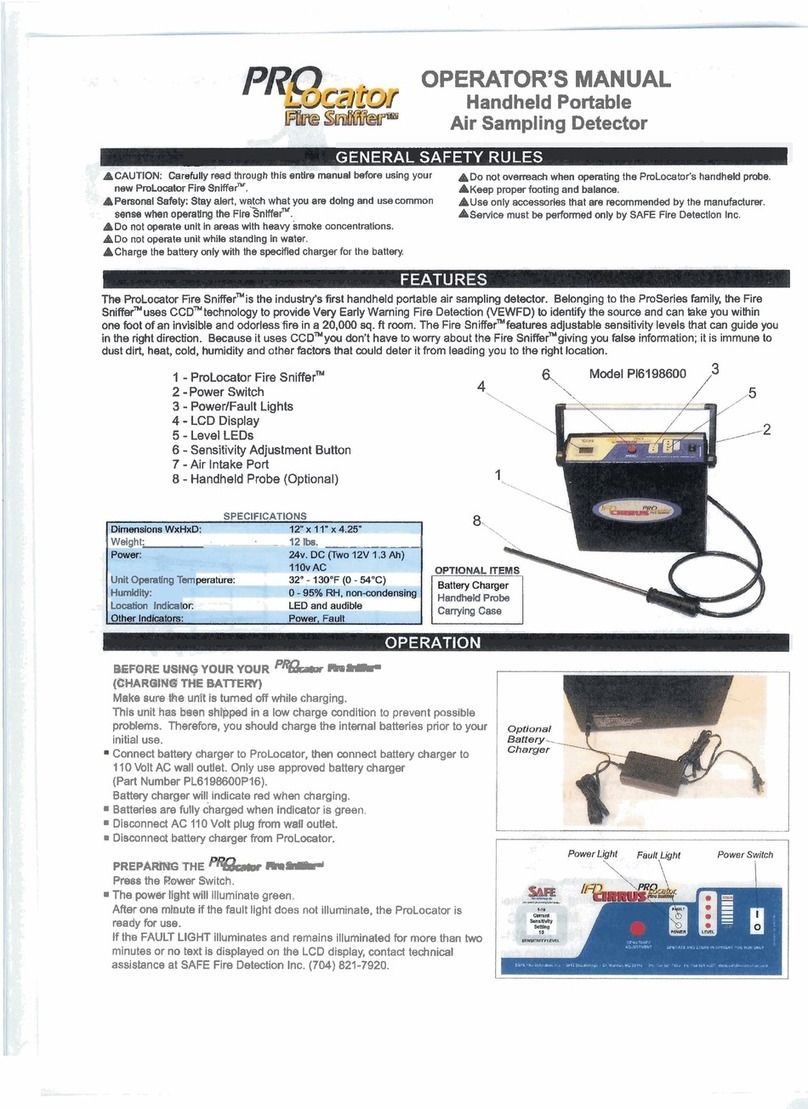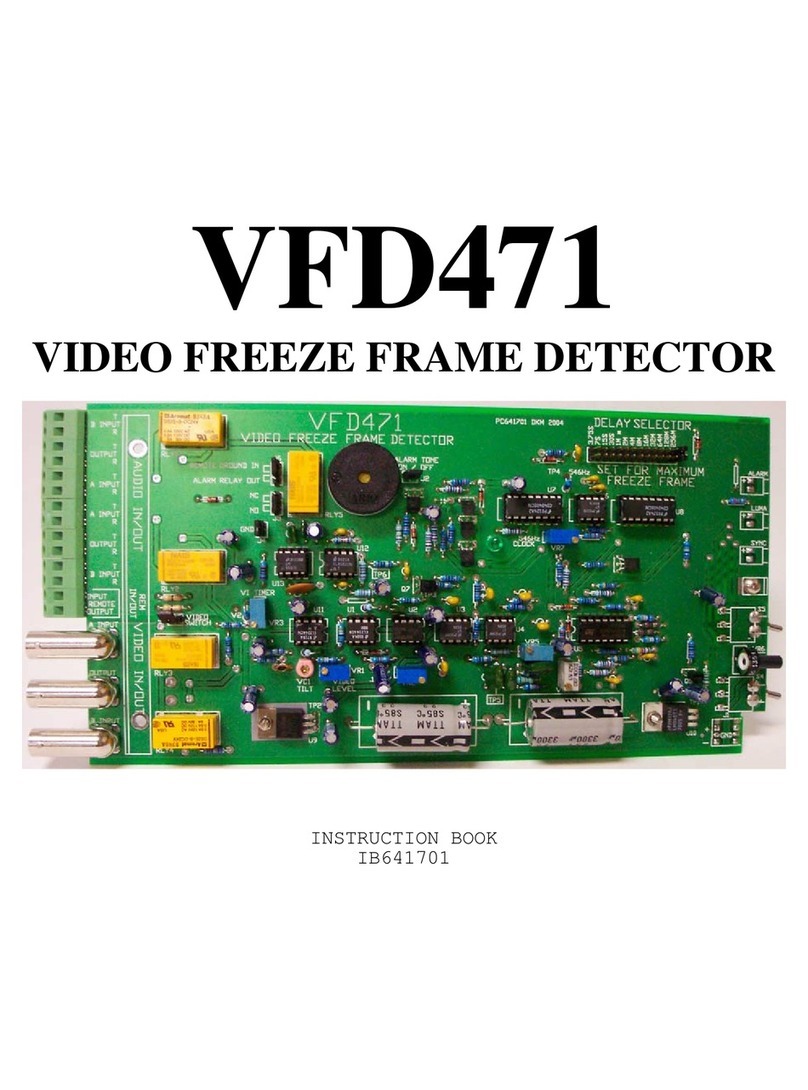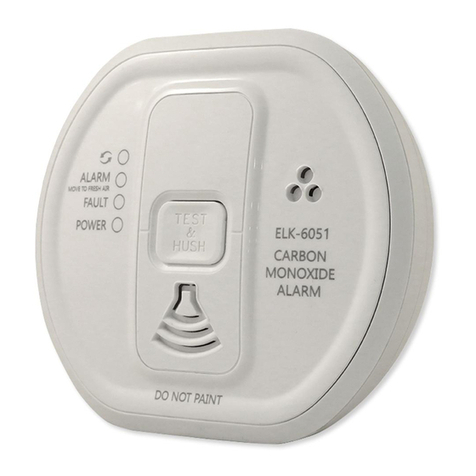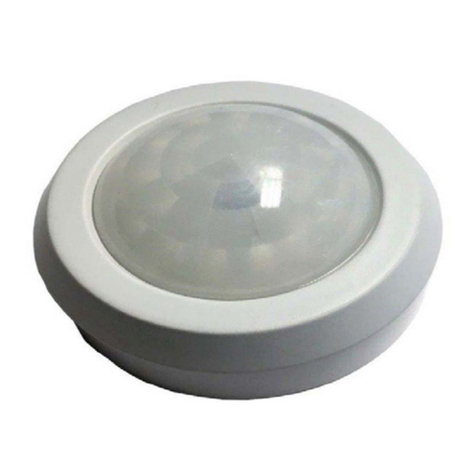
4
Standby
In standby mode there are no active visible or audible
indications to the occupant. To confirm that the Detector is
operational perform a weekly button test.
Weekly Button Test
Press and hold the test button and verify that the red LED
flashes rapidly and the Detector ramps up to full sound.
Sensing Fire
As soon as the Detector senses smoke it will go into alarm
(along with any interconnected Detectors). The red LED on
the Detector sensing smoke flashes rapidly to indicate this is
the Detector sensing smoke / fire. Follow the instructions in
section 3 and evacuate the building.
Silence False / Nuisance Detector Activations
Occasionally Smoke Detectors can be activated by phenomena
other than fire, such as dust, insects, cooking smoke and
shower steam. Once you are sure it is a nuisance activation
press the large test button to silence the Detector for 10
minutes – the red LED will then flash every 8 seconds for
10 minutes. Pressing the test button will make the unit less
sensitive, but if a large amount of smoke / steam / dust is
observed the unit will remain in the activation condition.
Nuisance activation in an Interconnected System
In the case of a real fire, the occupiers of the dwelling
should proceed to evacuate as per instructions in section 3.
However, if the system is responding to a recurring nuisance
activation it is very important that the Detector at fault is
identified so the problem can be eliminated by cleaning or
replacing the Detector. The Detector at fault can be identified
by a rapidly flashing red LED. Once it has been located follow
directions for Silence False / Nuisance Detector Activations
above.
Fault Condition Indicators Explained
Low Battery
The Detector will emit a short beep and flash the Yellow LED
when it becomes partially depleted. Check the date when the
Detector should be replaced which is given on the sidewall of
the Detector. When electronic self testing indicates that the
battery is becoming low the Detector will beep, and the yellow
LED will flash at the same time (about every 48 seconds) to
warn the user. This indicates that the battery or batteries must
be replaced.
Contaminated Chamber
If the Detector sounds with no apparent smoke present, press
the test button to silence it for 10 minutes (as described
above). If Detector sounds again it may be contaminated.
Pressing the test button again, within 4 minutes of the
Detector re-sounding, will cause the Detector to compensate
for chamber contamination and normally resolve the problem.
If the Detector re-sounds a third time, it is likely that the
Detector is excessively contaminated and needs replacing.
If it is not convenient to replace it immediately, pressing the
test button within 4 minutes of it going into alarm (for the
third time) will silence the Detector for 8 hours – however
it will give two short beeps (second apart) every 10 minutes
to remind the user it has been disabled. If the contamination
clears the Detector will return to normal operation.
(Note: this does not reduce the users fire protection, as a
Smoke Detector in continuous alarm due to a fault, is useless
and must be silenced – by taking the Detector down or as
described here. This procedure has the added benefits that
the user is reminded every 10 minutes by two short beeps
that the Detector needs to be replaced and that if the
problem clears the Detector will return to detecting fire).
The unit should flash the yellow LED 4 times if dust level is
too high and user should clean the Detector as described in
section 8.4.


















